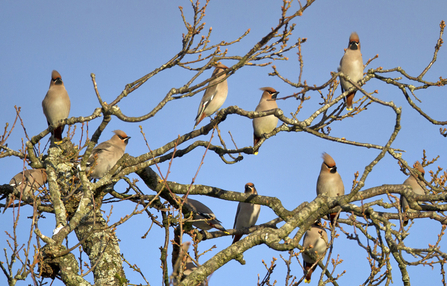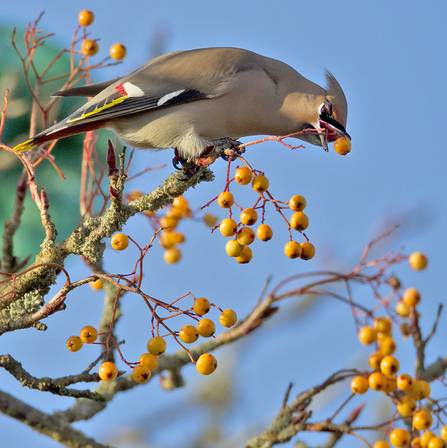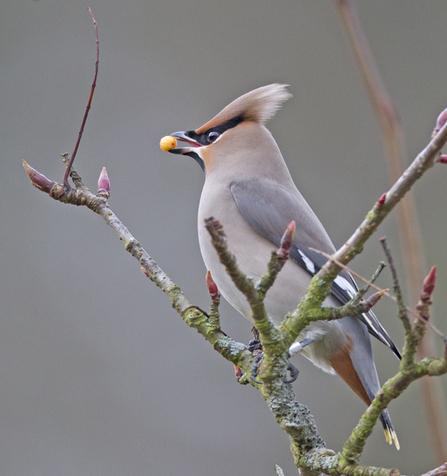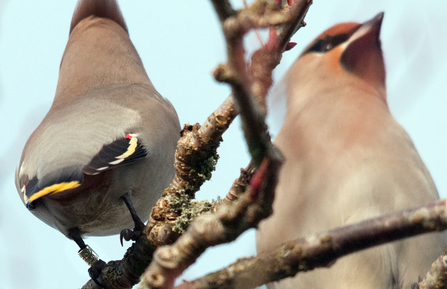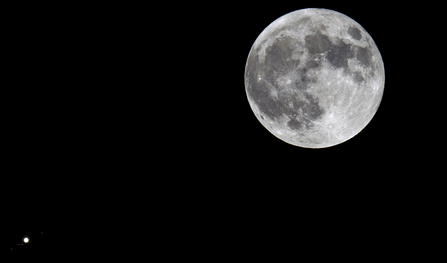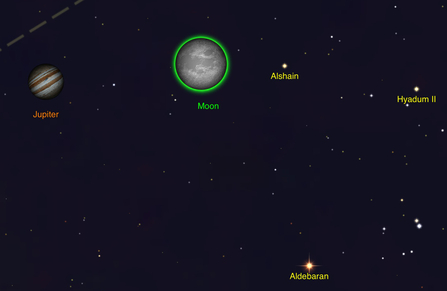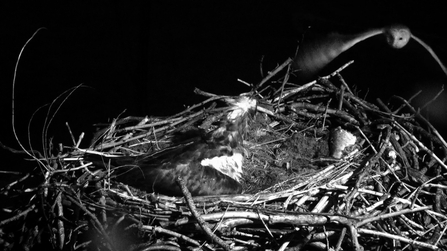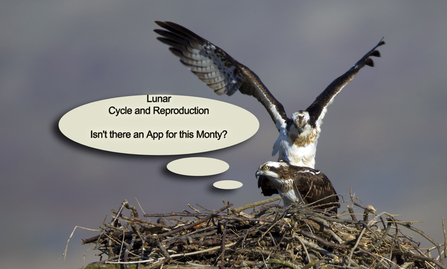Returning home from Cors Dyfi last Tuesday afternoon, I popped into Machynlleth to do some shopping. Right next to the library there were around 40 or so of these wonderful birds perching in a nearby tree - waxwings.
Will this winter be a 'Waxwing Winter' in the UK?

